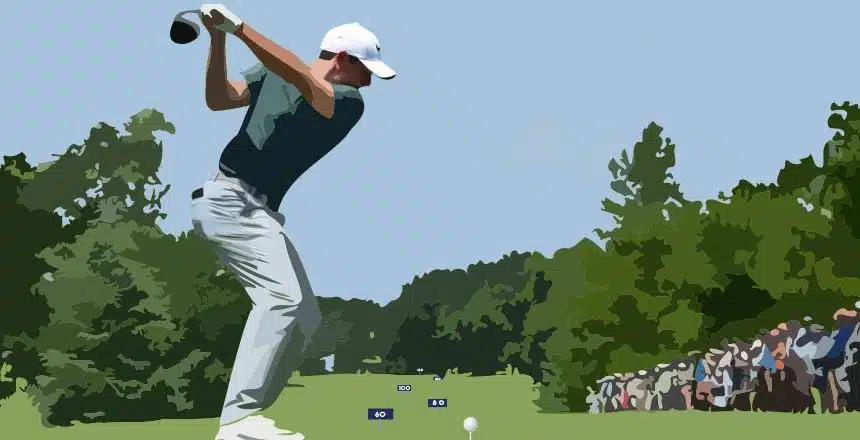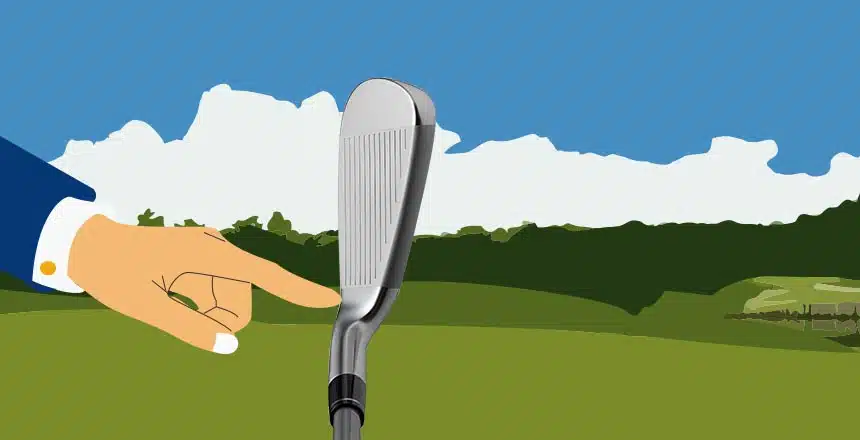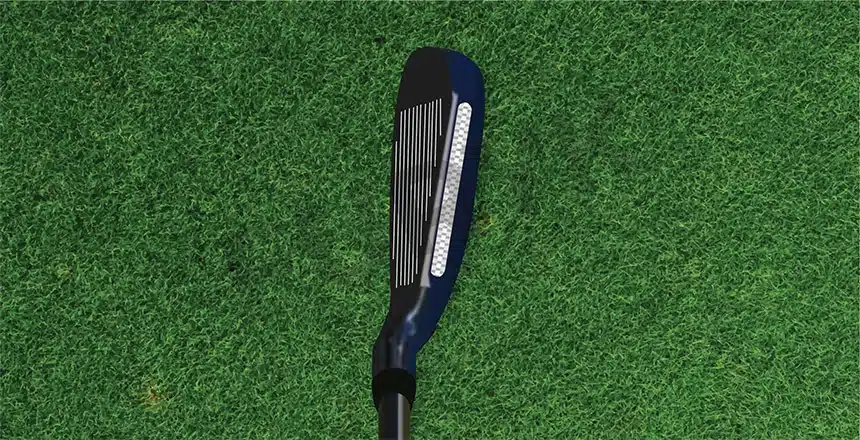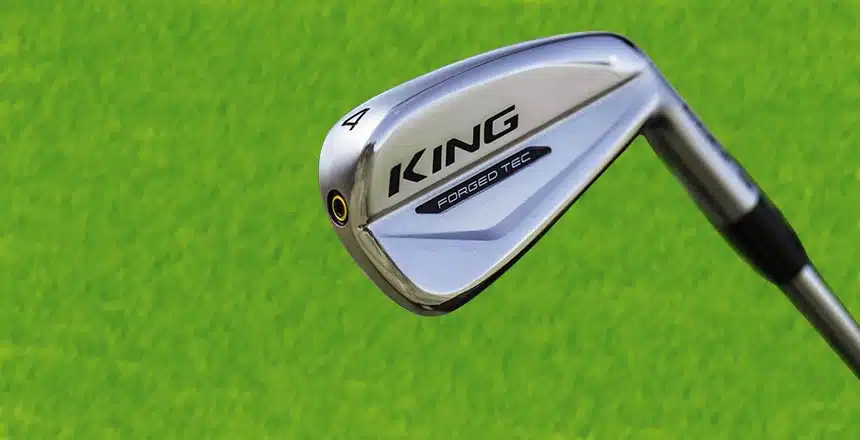If little details like golf ball dimples affect distance, then how can entire golf clubs not have the same effect, right?
It’s the shaft length that has a direct impact on the clubhead speed and, as a result, the distance produced. For example, when club length goes from 46 inches to 48 inches, driving distance naturally increases by 4-5 yards.
And now when you combine this increased shaft length with a lower loft, expect distances to elongate even more. And of course, other factors that are equally crucial also matter. Such as clubhead volume/size – a larger clubhead, no doubt, also boosts your distance potential.
So how about you find out the average golf club distance, so you can know where you stand and how high you should be aiming as a competent golfer. Once you get to understand the basics about the ‘potential’ of your every club, you can then apply those numbers and data to your specific swing speed, playing strengths, and things like that.
In This Post
Why is Knowing Average Distances of Golf Clubs So Important?
I’m not going to turn this section into a complex explanation. So the only thing that you need to know about average distances hit by golf clubs is that knowing them allows you to manage distance gaps between your golf clubs.
Let me explain that with an example. There’s a 20-yard to 30-yard distance gap between the 3-wood and 4-iron you have. Keeping that in mind, you’re left with a bit of a sticky situation if there’s a shot that demands a distance within that large gap.
So it seems only logical to deduce that your golf scores will seriously improve if you know average distances. Knowing them would also mean being able to successfully make your way through the course. And this includes avoiding hazards, out of bounds, etc. that often tend to turn your scorecard into an unsightly mess.
So once everything is figured out, you’re more likely to hit more greens in your every round of golf. Because being long or short to those greens is way more disadvantageous than being right or left with correct distance.
Average Distances of Each Golf Club
With Tour players, you don’t need to bother because almost every single one of them knows how far their each golf club really goes. And they know this information to the most accurate yard!
But then you don’t, which is fine too. So anyway, here are those average numbers…
Average Driving Distance
216 yards, on average, is the driving distance produced by amateur golfers, no matter the age, skill level, or these oh-so-forgiving drivers that are beginner-friendly.
| Driver Distance | |
|---|---|
| Distance for Male Golfers | 230 yards |
| Distance for Female Golfers | 175 yards |
| Average Distance for PGA Tour Players | 294 yards |
| Average Distance for LPGA Tour Players | 244 yards |
| Average Distance Range for Men | 200–260 yards |
| Average Distance Range for Women | 150–200 yards |
And if your goal is to HIT IT EVEN LONGER, here’s what you can do.
Average Fairway Wood Distance
How Far Does A 3 Wood Go?
| Distance | |
|---|---|
| Distance for Male Golfers | 215 yards |
| Distance for Female Golfers | 150 yards |
| Average Distance for PGA Tour Players | 275 yards |
| Average Distance for LPGA Tour Players | 255 yards |
| Average Distance Range for Men | 180–235 yards |
| Average Distance Range for Women | 180–235 yards |
After the driver, it’s the 3 wood that’s the longest golf club. And when this particular club is struck well, its distance is only slightly shorter in comparison to that produced by the driver. To be more specific, 15 to 20 yards shorter.
But then a 3 wood is not the easiest golf club to hit if you’re a beginner. But it has proved to be highly advantageous in the case of par 5’s and those long par 4’s.
How Far Does A 5 Wood Go?
| Distance | |
|---|---|
| Distance for Male Golfers | 200 yards |
| Distance for Female Golfers | 140 yards |
| Average Distance for PGA Tour Players | 250 yards |
| Average Distance for LPGA Tour Players | 200 yards |
| Average Distance Range for Men | 160–220 yards |
| Average Distance Range for Women | 110–170 yards |
Much like your 3 wood except that 5 wood has a slightly higher loft, which seems perfect for when you want to hit out the fairway.
Mostly, players with a faster swing speed can achieve 210 yards with a 5 wood whereas fast-swing women golfers knock this club 170 yards.
Average Hybrid Distance
| Distance | |
|---|---|
| Distance for Male Golfers | 190 yards |
| Distance for Female Golfers | 130 yards |
| Average Distance for PGA Tour Players | 230 yards |
| Average Distance for LPGA Tour Players | 190 yards |
| Average Distance Range for Men | 160–200 yards |
| Average Distance Range for Women | 100–160 yards |
How far does an average 3 hybrid go? I’ll get to it eventually. But before that, let me state the obvious just for those who don’t already know. Hybrids are gaining more and more popularity these days because they actually work as long-iron alternatives.
Hybrids, in comparison to long irons, are much easier to hit. For instance, the technology integrated into these 12 hybrids makes them so much more forgiving even for a senior golfer.
Average Iron Distance
How Far Should 4 Iron Go?
4 irons come with a long shaft, so it’s got some great distance potential. Hence, it is a very handy club that also produces a low ball flight.
- Average golfers (men – 170 yards, women – 120 yards)
- Average PGA players (men 220 yards, women (LPGA) – 180 yards)
- Average range depending on swing speed (men – between 150 and 190 yards, women – between 90 and 150 yards)
How Far Should 5 Iron Go?
The 5 iron is a highly versatile golf club that you can hit out of heavy rough or from the fairway. Think of it more like a mid-range, mid-handicap iron capable of boosting distance and, at the same time, giving your shots sufficient height, so the ball sticks on that green.
- Average golfers (men – 160 yards, women – 110 yards)
- Average PGA players (men 210 yards, women (LPGA) – 170 yards)
- Average range depending on swing speed (men – between 140 and 170 yards, women – between 80 and 130 yards)
How Far Should 6 Iron Go?
The loft of a 6 iron is 31 degrees, and that’s just what is needed for launching the ball slightly higher in comparison to a 5 iron. But then you don’t get the same amount of long-distance here.
- Average golfers (men – 150 yards, women – 100 yards)
- Average PGA players (men 200 yards, women (LPGA) – 160 yards)
- Average range depending on swing speed (men – between 130 and 160 yards, women – between 70 and 120 yards)
How Far Should 7 Iron Go?
If you’re new, you’re highly likely to be using your 7 iron the most because a good one really knows how to maximize and optimize both distance and trajectory. Plus, hitting a 7 iron is so much easier than the others.
- Average golfers (men – 140 yards, women – 90 yards)
- Average PGA players (men 190 yards, women (LPGA) – 150 yards)
- Average range depending on swing speed (men – between 120 and 150 yards, women – between 60 and 110 yards)
How Far Should 8 Iron Go?
The 37-degree loft of 8 irons, at least the majority of them, lets you hit your shots high into the air. It works the best in situations where you have to reach the green. Approach shots and chip shots are usually taken with an 8 iron.
- Average golfers (men – 130 yards, women – 80 yards)
- Average PGA players (men 180 yards, women (LPGA) – 140 yards)
- Average range depending on swing speed (men – between 110 and 140 yards, women – between 55 and 100 yards)
How Far Should 9 Iron Go?
How about welcoming the opportunity for quite a few short birdie putts? And no other golf iron or club does that better than a 9 iron, which has the highest iron loft. So if you want your shots to soar HIGH, 9 iron is the way to do that.
- Average golfers (men – 120 yards, women – 70 yards)
- Average PGA players (men 170 yards, women (LPGA) – 130 yards)
- Average range depending on swing speed (men – between 100 and 130 yards, women – between 50 and 95 yards)
Average Wedge Distance
How Far Should You Hit A Pitching Wedge?
For your pitch and even chip shots, the pitching wedge comes to the rescue. It’s also perfect for all those full shots you’re not confident you can hit with a 9 iron.
- Average golfers (men – 105 yards, women – 60 yards)
- Average PGA players (men 150 yards, women (LPGA) – 110 yards)
- Average range depending on swing speed (men – between 80 and 120 yards, women – between 50 and 80 yards)
How Far Should You Hit A Gap Wedge?
It’s the highly skilled and more experienced golfers who prefer carrying a gap wedge in their golfing arsenal.
It’s used when you have to loft your golf ball higher, much higher than what happens with the pitching wedge. However, the loft has to be lower than sand wedge. After all, the goal of a gap wedge is to fill the “gap” between the two wedges, namely pitching wedge and sand wedge.
- Average golfers (men – 90 yards, women – 55 yards)
- Average PGA players (men 135 yards, women (LPGA) – 105 yards)
- Average range depending on swing speed (men – between 70 and 110 yards, women – between 45 and 75 yards)
How Far Should You Hit A Sand Wedge?
Getting out of pesky sand bunkers means making the most of a sand wedge. But then this particular wedge isn’t the easiest to hit simply because it has the highest loft.
- Average golfers (men – 80 yards, women – 50 yards)
- Average PGA players (men 120 yards, women (LPGA) – 100 yards)
- Average range depending on swing speed (men – between 60 and 100 yards, women – between 40 and 70 yards)
How Far Should You Hit A Lob Wedge?
Even higher than the sand wedge, a lob wedge has a loft between 58 and 64 degrees. So it gives you the most height but then don’t expect too much distance. With a lob wedge, when you hit it like a pro, you can actually achieve plenty of backspin.
- Average golfers (men – 70 yards, women – 40 yards)
- Average PGA players (men 100 yards, women (LPGA) – 80 yards)
- Average range depending on swing speed (men – between 50 and 90 yards, women – between 35 and 60 yards)
There is a less popular golf club called the Heavenwood, which you can read about here.
Average Distances Gained by Golf Clubs – FAQs
How Far Should Golfers Hit with Each Club?
The answer to this question calls for a golf club distance chart, so you can get a rough idea of the estimated or average distances you should be hitting with your every club.
| GOLF CLUB | Women Golfers | Men Golfers |
|---|---|---|
| Driver | 160/185/210 yards | 200/240/280 yards |
| 3 wood | 125/150/180 yards | 180/225/245 yards |
| 5 wood | 105/135/170 yards | 170/195/220 yards |
| 2 iron | 105/135/170 yards | 170/195/215 yards |
| 3 iron | 100/125/160 yards | 160/180/205 yards |
| 4 iron | 90/120/150 yards | 150/170/195 yards |
| 5 iron | 80/110/140 yards | 140/160/180 yards |
| 6 iron | 70/100/130 yards | 130/150/170 yards |
| 7 iron | 65/90/120 yards | 120/140/160 yards |
| 8 iron | 60/80/110 yards | 110/130/150 yards |
| 9 iron | 55/70/95 yards | 95/115/140 yards |
| Pitching wedge | 50/60/80 yards | 80/105/135 yards |
| Sand wedge | 40/50/60 yards | 60/80/105 yards |
How Far Do Average Golfers Actually Hit It?
Average, recreational golfers drive the ball anywhere between 195 yards and 205 yards.
As for PGA Tour players, men can achieve an average driving distance of 280-320 yards. While LPGA Tour players, on average, hit 230-270 yards.
What Golf Club Is the Best for Distance?
That would be your DRIVER. A golf driver is specifically engineered to boost distance off that tee. And if you’re using one of the best drivers of all time, then expect to maximize your distance potential with that particular club the most effortlessly.
What Are the Most Helpful Tips to Know YOUR Distances?
Make sure you’re not guilty of poor or wrong golf club selection. And to be able to stay away from such a rookie mistake is to know what YOUR distances or yardages are with each club. How far YOU hit is important to find out if you wish to improve your scores. So here’s what you should be doing to dial in those need-to-know distances…
- Keep Track of Yardages
I mean, literally keep track, which means carrying a notepad to make notes or you could just do that on your phone. Note down the average distances you hit with your every golf club. And then compare when you hit the golf course next time for another round of golf.
- Increase Your Range Time
How far you’re actually hitting just cannot be known if you don’t clock in more hours on that practice range. Use each golf club you have in the bag, not just the ones you like.
- Play More Practice Rounds On Your Own
Yet another very practical tip to find out your distance with every club! Play the real game with new ‘distance’ golf balls, and not used balls (the former, you’ll see, travels much farther than the latter).
Keep in mind that it doesn’t matter how long those yardages are, the point is to note down the distances generated. So you can even use different golf clubs for hitting the same shot.
How Do Golf Clubs Actually Affect Distance?
Distance is all about creating more clubhead speed. And it’s the golf club shaft that can give you that clubhead speed to boost distance. Typically, the shaft length is supposed to be 48 inches (46 inches is more widely accepted) because a longer shaft increases distance very naturally.
And then you also have the loft of the golf club that directly determines the distance. A lower loft, just like a longer shaft, contributes greatly to increasing distance. So a combination of increased shaft length and decreased loft can actually help you gain extra yardages than a club with a shorter shaft and more loft.
One final factor that also has a huge impact on how far you hit is the clubhead volume. Fairway woods, now in this day and age, have gone to 180cc from 160cc. So the larger size here translates into more effortlessly boosting your distance potential.
The End of All There Is to Know!
You can obviously work on your swing speed to hit farther and straighter than you do at the current moment. But then how do you find out how much speed to increase? One can only get better more accurately if one knows the average distances hit. Against these numbers, which are nothing but only a starting point for beginners, you can measure up your performance.
But then, at the same time, I would also like to add that these are just ‘average’ yardages achieved by ‘average’ golfers. So if you’re new to the game of golf, it doesn’t make sense to compete with these averages because you’re not there yet. So give yourself some credit!






Very well informed, make it much easier to know the the distance, and select the right clubs, make my game less complicated!! Thanks….
wow. i guess i really am just an average guy. the distances you posted for averages for each club are my distances +/- 3 yards.
One iron yardage? ? ?
Please, explain!